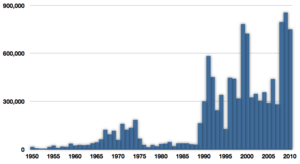Araucanian herring facts for kids
Quick facts for kids Araucanian herring |
|
|---|---|
| Conservation status | |
| Scientific classification | |
| Kingdom: | |
| Phylum: | |
| Class: | |
| Order: | |
| Family: | |
| Subfamily: | |
| Genus: |
Strangomera Whitehead, 1965
|
| Species: |
S. bentincki
|
| Binomial name | |
| Strangomera bentincki (Norman, 1936)
|
|
| Synonyms | |
|
Clupea bentincki Norman, 1936 |
|
The Araucanian herring (Strangomera bentincki) is a type of fish that lives in the ocean. It's part of the Clupeidae family, which includes other well-known fish like sardines and anchovies. This herring is a shiny fish, dark blue on top and silver underneath. It swims in large groups, called schools, near the coast of South America. You can find it along the Chilean coast, from Valparaiso down to Talcahuano.
These fish usually swim in waters from the surface down to about 70 meters deep. They are filter feeders, meaning they eat tiny living things from the water, like small plankton and diatoms (which are a type of tiny algae). Araucanian herring grow to about 15 centimeters long. They become old enough to have babies when they are about 10 centimeters long. They lay their eggs in the open water between June and November.
Fishing for Araucanian Herring
The Araucanian herring is an important fish for fishing. It is mostly caught to make fishmeal, which is used as food for farm animals and other fish. In 2009, this herring was the 12th most caught fish species in the world, according to the FAO (Food and Agriculture Organization). All of these fish were caught off the coast of Chile.

See also
 In Spanish: Clupea bentincki para niños
In Spanish: Clupea bentincki para niños


